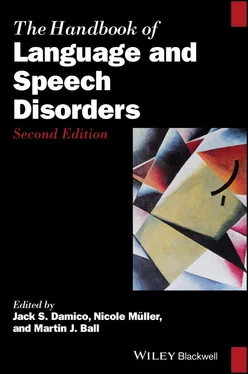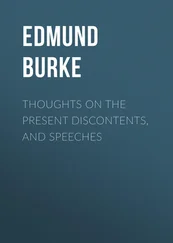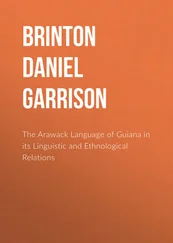The perceptual bottleneck is, to a great extent, the reason for the variability that is reported in the speech‐perceptual and listening performance results of CI listeners. This variability means that few postlingually deafened CI recipients automatically experience an improvement in receptive communication abilities that boost them to be wholly on a par with their NH counterparts. With this variability in mind, let us now review some of the work that has been done on speech‐perceptual performance and consider how these results can inform our understanding of candidacy issues and the setting of realistic expectations for post‐implantation communication.
3.3.2 General Communication Issues with Cochlear Implants
A central aim of cochlear implantation is to improve users’ communication abilities relative to those experienced prior to implantation, when they were living with hearing loss and the communication problems that this entails. For the current purpose, communication abilities are taken to refer to linguistic abilities, but in a broad sense, that is, receptive and productive linguistic abilities on several levels, ranging from speech perception and production through morphology and syntax to narratives and pragmatics. On each of these levels, communication problems could be expected to occur given CI users’ fundamental problem of hearing loss. However, as we will see, as a generalization over individuals, it could be stated that implantation alleviates issues on those levels to different degrees, although it must be borne in mind that there exists much individual variation and that many factors influence outcomes. These linguistic domains will be taken up in subsequent parts of this chapter. Moreover, they will be discussed in the context of a basic framework, linking communication according to those several levels.
This model is a general framework of communication abilities that is loosely inspired by Wilson and Cleary’s (1995) theoretical model for linking clinical outcomes to health‐related quality of life (HRQoL); for a discussion of this, see Huber and Havas (2019). Their model is a taxonomy of measures of HRQoL implying that more biological measures, such as disease symptoms, through functional measures, like the ability to perform certain tasks, underlie the encompassing measure of quality of life (QoL). The framework for the current discussion adopts this from a taxonomic approach, basically assuming that the communication problems of CI recipients, on any level, can partially be traced back to their pre‐ and post‐surgery speech perception performance (see Figure 3.2). CI users’ lower‐level auditory acuity problems result in missing out on linguistic information, which in turn causes broader communication and socio‐emotional problems. The framework (see Table 3.1) is a logical assumption for the simple reason that the perception deficits experienced by CI users are the basic characteristics that distinguish CI from non‐CI users.
Table 3.1 A Teleological Framework of Tasks and Levels involved in Speech Perception.
| Task |
Level |
| Determine communicative intent |
High order—cognitive |
| Suprasegmental interpretation |
Prosody perception—analysis of acoustic surface |
| Word recognition |
Lexical parsing |
| Segmental recognition |
Low order—perceptual |
For the current purpose, speech perception is taken to refer to the low and middle levels of the receiver’s involvement in the communication chain, that is, respectively, detection and understanding of speech (recognition of words), both its segmental and suprasegmental layers. Speech perception, in this sense, involves recognition of a sufficient number of phonemes per word or group of words to recognize uttered phrases, that is, the segmental layer, as well as recognition of prosodic patterns. Prosody is defined as the information in the speech signal that is not reducible to the intrinsic and co‐intrinsic segmental information (Rietveld & van Heuven, 2016). Given CI users’ basic hearing deficits, they might prima facie miss out on any of the components of speech perception, including: recognition of segments (vowels and consonants), words, stress and intonation patterns, or prosody, and morphosyntactic understanding. Recent evidence regarding how problematic these areas are for CI users will be discussed in turn. Comprehension of speech (recognition of an utterance’s message) is understood to be a question of the higher post‐lexical level of the speech chain and will be treated separately in a section on morphology and syntax. The same holds for prosody, which has its own communicative functions, that is, apart from those that occur in the segmental layer, as well as, finally, the broader communicative consequences of errors that occur prior to a given level.
The reason for defining this framework in the current chapter is that it simplifies the discussion of what communication problems are for CI users. Furthermore, it provides a unified explanation for those problems, which in turn might direct attention to various rehabilitation approaches. With speech perception problems taken as the basic underlying problem, we start out by reviewing research on those.
3.3.3 Recognition of Segments
On an acoustic surface level, the speech signal can be divided into three dimensions: spectral (determined by frequency content), temporal, and amplitude (intensity). As discussed previously, pitch perception and perceptual judgments in the frequency domain are particularly difficult for CI listeners, which is in large part due to the electrical–neuronal bottleneck. The bottleneck helps in understanding CI users’ speech perception deficits and receptive communication abilities. As a general observation, many implanted children and adults are able to reach a functional level of speech understanding as well as intelligibility, although speech perceptual studies of CI listeners are notorious for showing a large degree of variation in the results. However, besides the fact that this success testifies to the robustness of speech and language perception and production, it belies their deficits in the perception of subtle levels of speech phenomena that are immediately perceptible to normally hearing listeners.
A recent review of consonant and vowel perception in children and adults with CIs as measured with nonsense word tests, performed by 581 postlingually deafened and 66 prelingually deafened participants in the course of 50 studies, noted that CI users have more difficulty with the identification of vowels and consonants than NH controls, who tend to perform at or near ceiling level (Rødvik, von Koss Torkildsen, Wie, Storaker, & Silvola, 2018). The postlingually deafened participants had a mean score of 76.8% on vowel identification and 58.4% on consonant identification, whereas this was 67.7 and 47.7%, respectively, for the prelingually deafened subjects. The differences between the two groups was, however, not significant. Vowels and consonants that are most often confused are those that have the same articulation manner and/or duration and voicing but different places of articulation, such as the consonants /p, t, k/ or /m, n/ and the vowels /&ip.iscp;, ɛ, ʌ, ʊ/.
This review shows that CI users have more trouble identifying consonants than vowels. The authors attributed this to the fact that vowels have a longer duration and higher acoustic energy than consonants. It also shows that segmental confusions tend to occur between sounds that share spectral properties. This makes sense given what we know about the electrical–neuronal perceptual bottleneck that is a part of CI listening, and the difficulty that this incurs for the perception of contrasts that are cued by changes in the frequency dimension. The authors furthermore noted that the advantage of using nonsense words over real words is that they circumvent the influence of the lexicon, which would obscure purely phonetic perceptual abilities. Moreover, the usage of nonsense words, which is more challenging than tests for recognition of real words, has a higher chance of avoiding performance at ceiling and is therefore a more sensitive alternative as a test for assessing speech perception abilities by CI users. These are, of course, valid arguments for using nonsense word tests in experimental contexts, but in terms of rehabilitation, the ultimate goal of which is to improve real‐world speech perceptual ability, nonsense words may not be the optimal choice of speech material for the obvious reason that CI recipients would be being trained on words that do not exist.
Читать дальше












